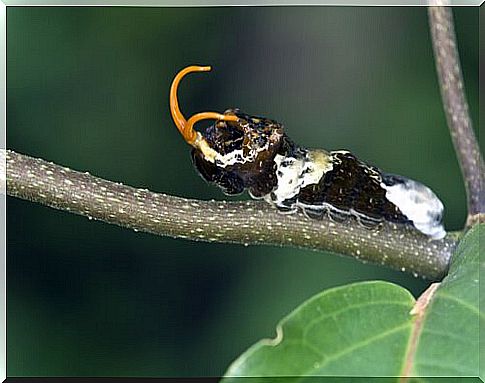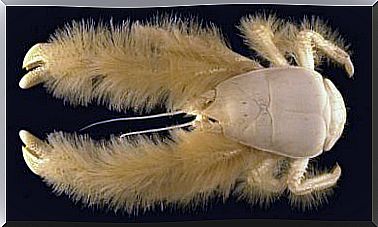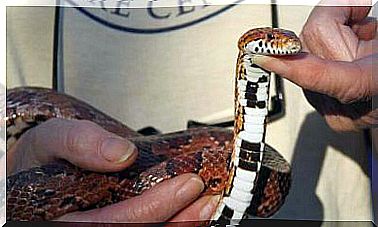Swallowtail Butterfly: The Biggest And Most Exotic

The Giant Swallowtail Butterfly or Papilio cresphontes is an amazing butterfly, exotic in appearance and very common in the Americas. The adult butterfly is a welcome visitor in gardens, plantations and landscapes in general.
In the larval or caterpillar stage, it can be considered a pest due to the habit of feeding on the foliage of most Citrus species . Some larvae can quickly defoliate small or young plants. However, larvae can be tolerated in large citrus trees.
Geographical distribution of the dovetail butterfly
This specimen of nature is widely distributed throughout the American continent. Its range extends from southern New England to the northern Great Lakes states to Ontario, passing through the southern parts of the Central Plains to the Rocky Mountains.
The species extends south to the Caribbean, the southwestern United States and, through Mexico, to Central and South America. The swallowtail butterfly is very common throughout the State of Florida.
Morphological characteristics
The adult male dovetail butterfly can measure about 14 centimeters in length, and the female about 14.7 centimeters. The dorsal wing surfaces of this butterfly are black with an impressive diagonal yellow band on the forewings.
The ventral wing surfaces are mostly yellow. The tail shaped like swallow wings can vary in color depending on geographic location. Some tails are filled with yellow, others are all black, and some are brighter red on the back of the ventral wing.

The five larval stages differ in appearance, but all share a resemblance to bird droppings. At younger stages they look more like bird droppings due to their smaller size.
Mature larvae usually rest on leaf stems or petioles, but younger larvae usually rest with the naked eye on the upper surfaces of leaves. The latter are predominantly black or brown with a white stripe, and have prominent ‘hair’.
Dovetail butterfly life cycle
The swallowtail butterfly drinks the nectar of many flowers and is common in gardens of azaleas, bougainvillea, Japanese honeysuckle, golden rod and swamp cotton. She can also drink liquid slurry.
Adult males patrol migratory routes through pine forests or citrus groves in search of females. The flight is very strong and slow, and butterflies can travel long distances. Courtship and copulation take place in the afternoon.
Females generally lay their eggs individually on the upper surface of the leaves of host plants. Eggs are spherical, measure 1 to 1.5 mm and are cream to brown in color. They usually have an irregular coating of an orange discharge that resembles the appearance of orange peel.

The larvae can metamorphose into small branches of the host plant, or they can travel a short distance to a vertically oriented structure such as a fence or other plant.
The brownish chrysalis usually orients itself at 45º in relation to the pupa substrate. At least two, sometimes three, reproductions occur annually in Florida.
Biological control
The swallowtail butterfly larva is considered a small pest of sweet orange. Host plants for the larvae include members of the citrus family, white sapote and other exotic plants.
Pupae are immobile and defenseless against parasitic insects. The larval stages seem to be safer against enemies than the pupa stage. The larvae defend themselves against predators, both insects and invertebrates, and against parasitic insects, because they are less visible through coloration and cryptic pattern.
In addition, the larvae have a gland in the middle behind the head that is used when attacked by small predators. This gland emits a secretion of very noxious and pungent chemicals that smell like rancid butter. This secretion is repellent and toxic to predators such as ants and spiders.









